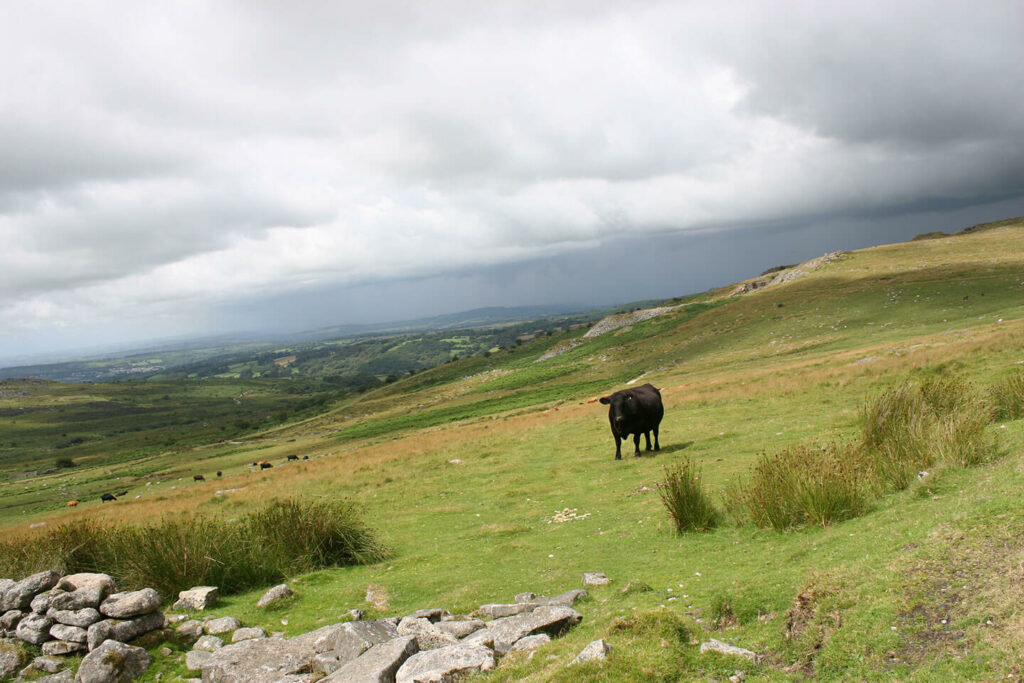Project team
Why it matters
In 2017, the UK’s National Parks were encouraged to develop Natural Capital Accounts (NC Accounts) as part of the Glover’s Landscapes review: National Parks and AONBs. The government’s Natural Capital Committee also advocated the same: in support of the 25 Year Environment Plan ambition “the UK intends to use a natural capital approach” to enable local decision makers to be “equipped with the tools they need to assess the benefits that come from their land and water assets so they can use them most effectively”.
Despite the existence of international guidance2 and national recommendations3, specific guidance was not available for developing NC Accounts at a local, sub-national scale at that time; something acknowledged at the time in the government’s own Enabling a Natural Capital Approach (ENCA): Guidance report and the 2019 Sixth Natural Capital Committee report.
This SWEEP project originally set out to work with Dartmoor National Park Authority (DNPA) and Exmoor National Park Authority (ENPA) to help them build sets of NC Accounts. However, as it became clear that there were serious deficits in data required to build NC Accounts at a local level, the project switched focus to provide DNPA and ENPA with a critical assessment of the usefulness of NC Accounting as a tool to inform decision-making for environment-facing organisations, at the local level.

Partners
This was a really useful piece of work bringing together academic expertise and specialist staff at the National Parks. We entered into this process to develop a robust natural capital account for the National Park. We hope the learning from this Project can be shared to improve the tools available and ensure a consistent approach.
Ally Kohler, Dartmoor National Park
What we did
We worked collaboratively with staff from DNPA and ENPA to:
- Build NC Accounts for both National Park Authorities (NPAs) following the ‘standard practice’ approaches adopted by environmentally-facing organisations.
- Where possible, they compared outputs from the ‘standard’ approach, with outputs from methods more consistent with the NC Approach, and applied them to detailed local data.
- Built capacity within both NPAs to understand and produce NC Accounts, including around decision-making about natural capital assets, ecosystem services focus, and data provisioning.
Impacts & benefits
- Developed knowledge and understanding – both Dartmoor and Exmoor NPAs benefited from an improved understanding of NC Approaches and Accounting methods. Over 200 people attended presentations organised by DNPA.
- Improved national Enabling Natural Capital Approaches (ENCA) Guidance –SWEEP reporting was included as a formal Case Study in Defra’s influential ENCA Guidance (Aug 2021 revision).
- Informed Dartmoor ELMs Test and Trial – Known as the Dartmoor Hill Farm Project, this ELMs Test and Trial explored the feasibility of using a Natural Capital Approach for local priority setting and landscape-scale planning. SWEEP findings were central to a critique of issues in the context of Dartmoor, with a focus on: (1) issues around data gaps, resources for monitoring and land access issues affecting data gathering; and (2) lack of guidance for sub-national approaches, especially in relation to biodiversity and peat, being two of Dartmoor’s most significant NC Assets.
- Built capacity within the NPAs – through the process of co-creating NC Accounts with each Park, the SWEEP team helped build staff capacity.
- Met government’s ambition for NPAs developing NC Accounts – NC Accounts were developed for both Dartmoor and Exmoor NPA for 2015. However, their limitations restricted the way in which the information could subsequently be used by the NPAs to inform decision-making (see Table 1).
- Informed Exmoor National Park Partnership Plan 2018-2023 – The Mid-term progress report (Nov 2021) of ENPA’s five-year Partnership Plan, setting out joint ambitions and strategies required to maintain the special qualities of the park, included a Case Study (Section 47) on the SWEEP ‘Local Natural Capital Accounting’ work.
The SWEEP project delivered a rigorous and robust assessment of natural capital accounting in the National Park. With an expectation that the natural capital approach will form the basis of our future planning and decision-making. I feel it’s very important we feedback the learning to Government in order to improve the processes and tools.
Clare Reid, Exmoor National Park
Looking to the future
The data gaps identified in this project led to the development of a new SWEEP project – ‘Enabling more sustainable landscape management through the co-creation of novel remote-sensing tools for mapping woodlands, moorlands and key habitats’.
This project co-created novel remote sensing tools to map, monitor and enhance the South West’s natural landscapes. They are supporting quicker, less costly and more effective decision-making by those tasked with managing the South West’s vitally important natural resources. More details on this project can be found at here.






